


|
Symmetric
Functions
Video Podcast
This is a video textbook introducing the topic of
symmetric functions. There is an accompanying tutorial which
shows how to compute in this algebra using computer algebra package
SAGE. You might encounter this topic in an
advanced undergraduate course or a graduate course
in mathematics. Concepts will be broken down
into videos of less than 10 minutes.
To understand these videos properly you may need
some background in linear algebra (basic concepts
such as vector space, dimension, matrix
manipulation, linear independence).
Exercises and background
documents
|


|
|
Video
1: Definition of the algebra of symmetric
functions
In this video I introduce the symmetric functions
as the algebra of ${\mathbb Q}[h_1, h_2, h_3,\ldots]$ with the
degree of $h_r = r$.
Typical questions that come after this video are:
Q1. Why define the algebra over ${\mathbb Q}$ (the rational
numbers)?
A: it could be any field but ${\mathbb Q}$ is general enough
and who wants to deal with square roots anyway?
Q2. Where are the variables?
A: not necessary because these are symmetric
functions, not symmetric polynomials. The
relation with symmetric polynomials will appear in
a future video. By defining the symmetric
functions this way we avoid taking the inverse
limit of polynomials to infinite series.
|
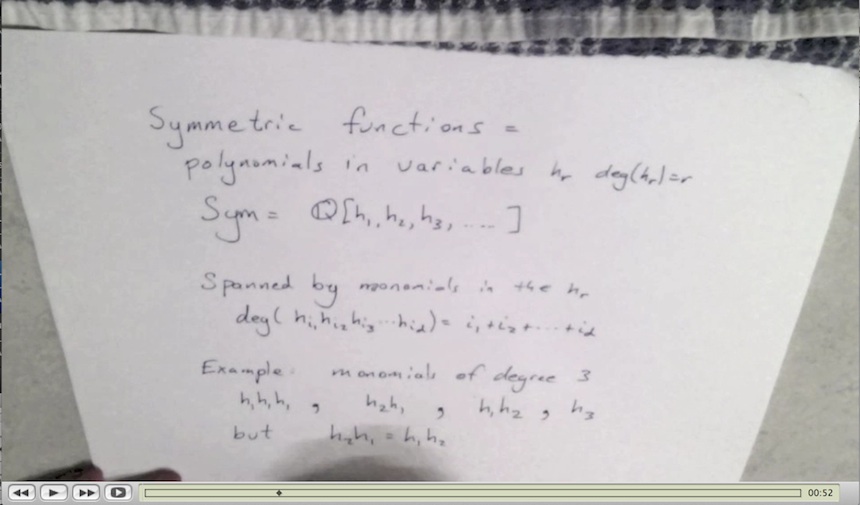
Click to access video
PDF of pages
|
|
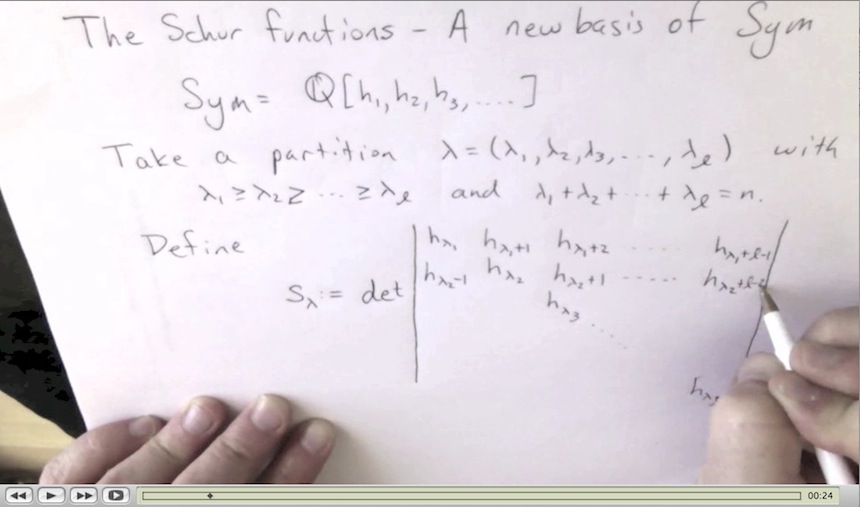
Click to access video
PDF of pages
|
Video
2: The definition of the Schur
symmetric functions
In this video the Schur functions are defined to
be determinant of a matrix whose $(i,j)$ entry is
$h_{\lambda_i-i+j}$. This is usually called the
Jacobi-Trudi formula for the Schur function
(although I failed to mention that during the
video).
|

|
|
Video
3: The Pieri rule
The rule for expanding an $h_r$ times and $s_\lambda$
in the Schur basis is called the Pieri rule. I
present it here as a combinatorial rule about how
to determine which terms appear by adding a
horizontal strip on a partition.
|
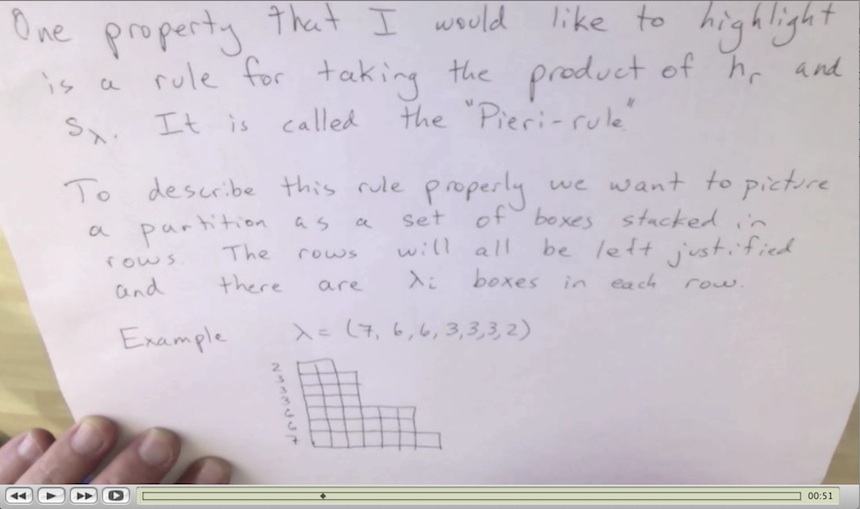
Click to access video
PDF of pages
|
|

Click to access video
PDF of pages
|
Video
4: Expanding the h-basis in the Schur basis
We can use a couple of methods for expanding an element which is
in the h-basis to the Schur basis. Here we describe two. The
first is to find how each of the h-basis elements expand in the
Schur basis by use of inverting a matrix. The second is to
use the triangularity relation between the Schur function
and the expansion in the complete basis.
|
|
|
Video
5: Expanding the h-basis in the Schur basis using column
strict tableaux
The coefficient of a Schur function $s_\lambda$ in complete
homogeneous basis element $h_\mu$ is equal to the number
of column strict tableaux of shape $\lambda$ and content
$\mu$. Here we do an example of applying the Pieri rule and
a few small examples of how column strict tableaux can be
used to give the Schur expansion of a few complete homogeneous
elements.
|
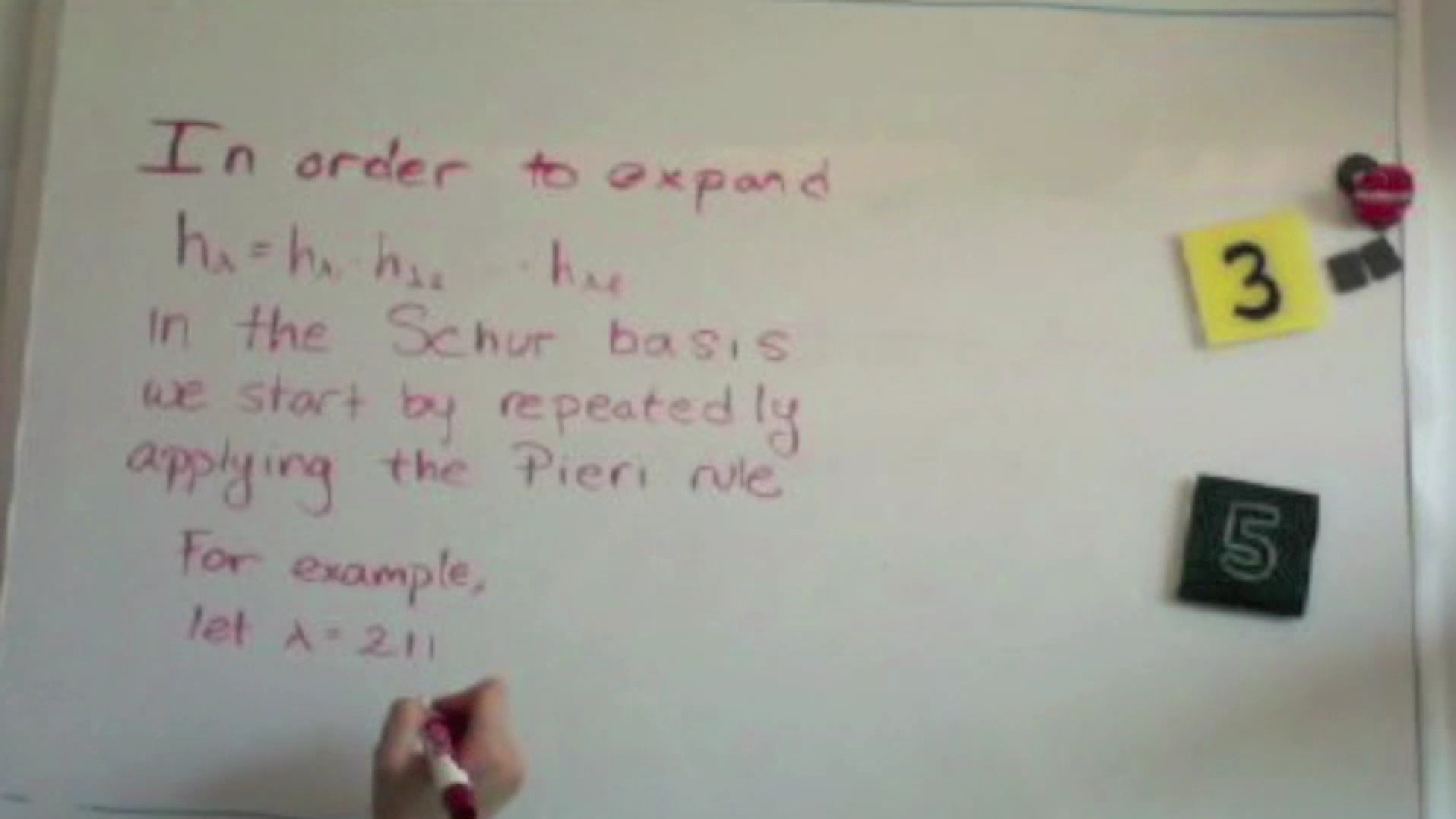
Click to access video
|
|
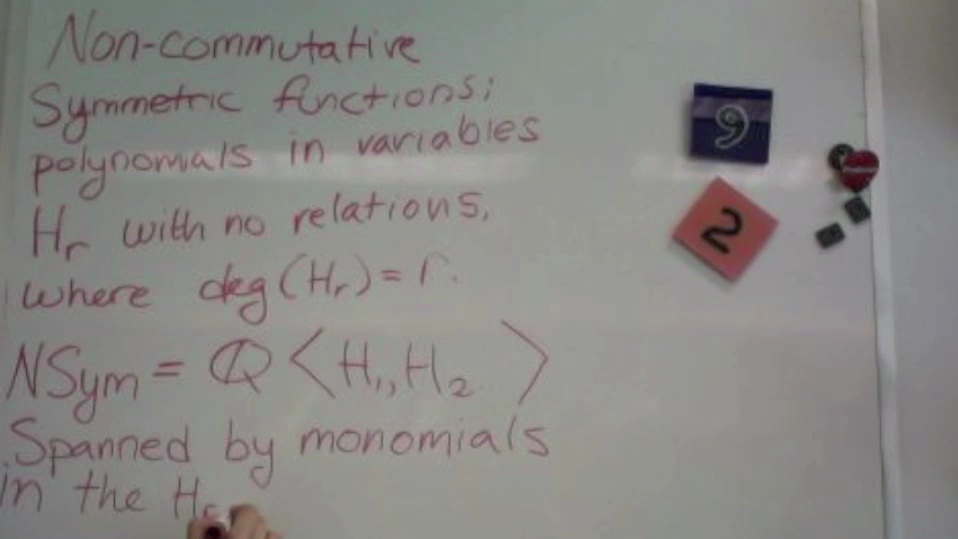
Click to access video
|
Video
6: Introduction to the Non-commutative symmetric functions
Just as the symmetric functions were defined as the algebra of
polynomials in commutative variables $h_r$, we can define the
non-commutative symmetric functions as the algebra of non-commutative
polynomials in variables $H_r$.
|
|